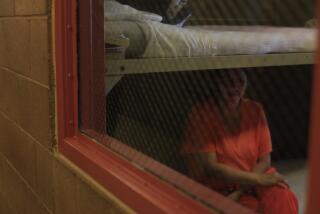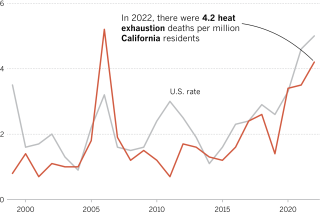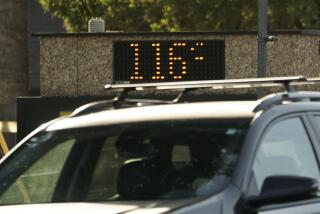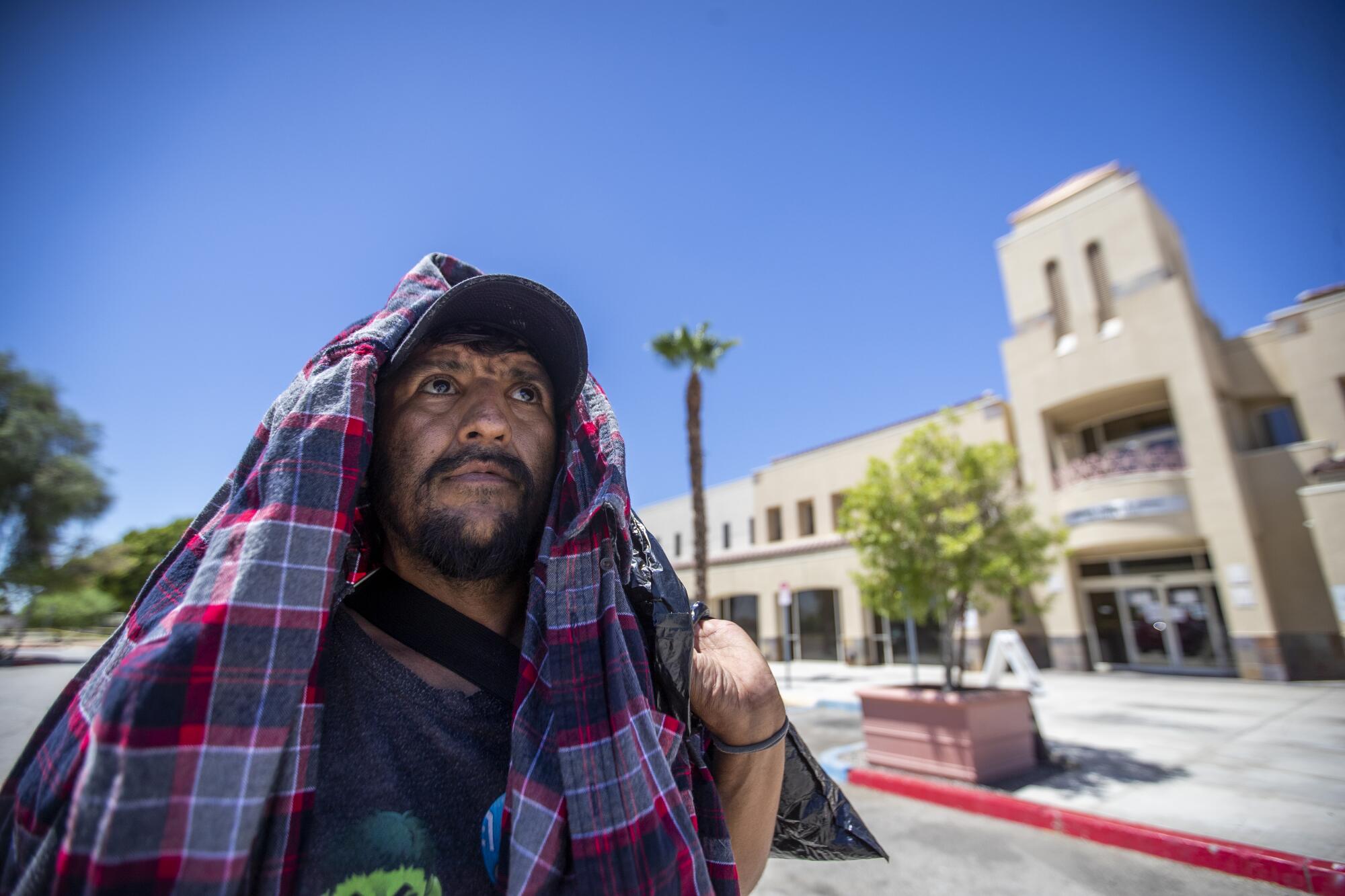
INDIO, Calif. — Charlotte Oliver is well acquainted with heat. She grew up in the desert regions of the Inland Empire, where temperatures this month have reached 121 degrees.
But for the 50-year-old, living with heat became an urgent matter when, amid alcohol addiction two years ago, she found herself on the streets.
“There were days I didn’t think I would make it,” she said. “I kept thinking, ‘I’m going to die out here.’”
For Southern California’s elderly and homeless populations, stifling heat is more than an inconvenience. Without the cooling centers and shelters that are sanctuaries for vulnerable populations, heat can be a killer.
Last year, 10 people died in Riverside County because of hot weather. That was before COVID-19 — which thrives in places like cooling centers, where people gather.
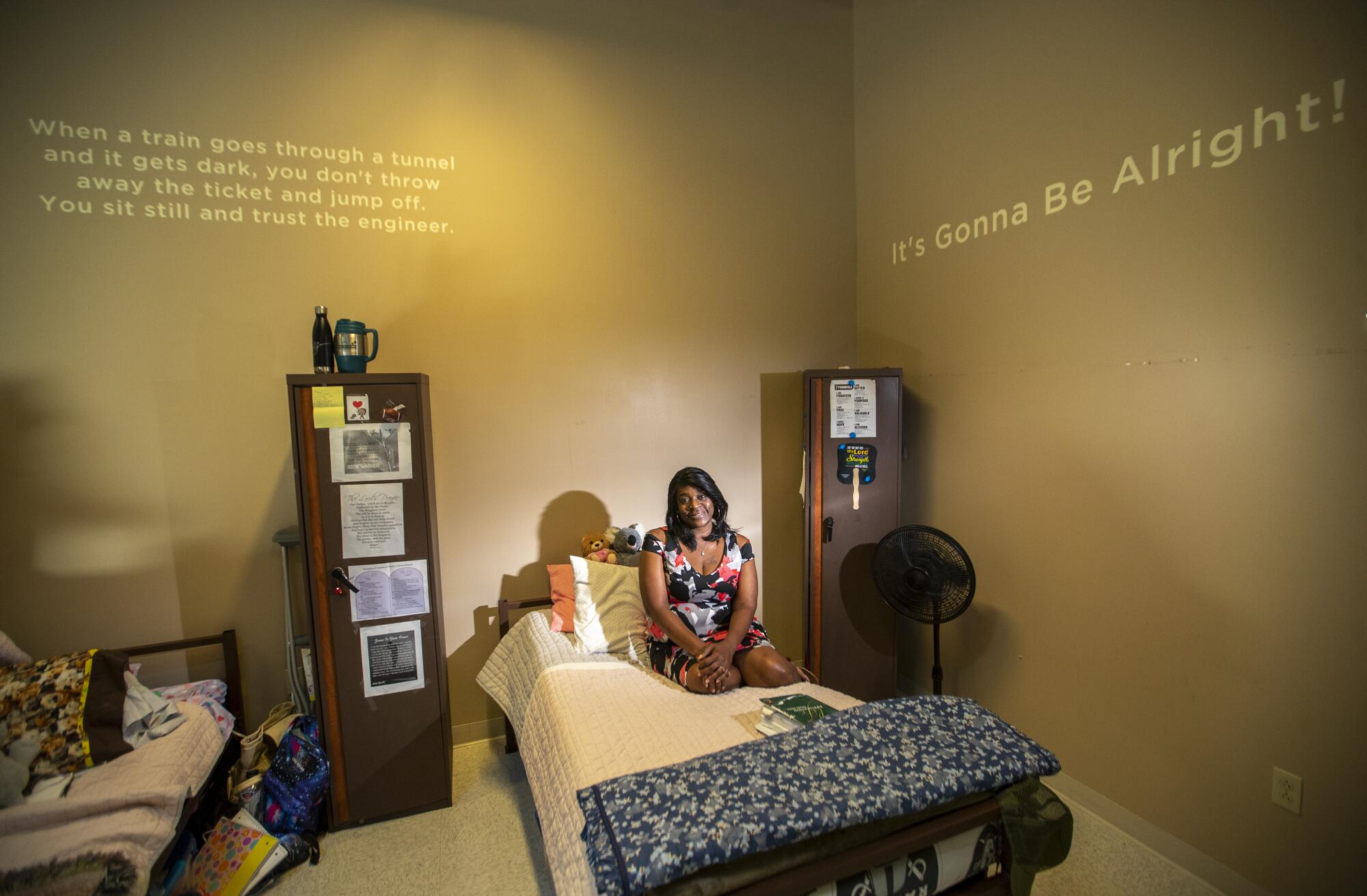
“The challenges to opening are being able to screen people [for coronavirus], especially since most cool centers are located at senior centers, and they’re the most at-risk group,” said Vince Wrzalinski, executive director of the Community Action Partnership in Riverside.
The dilemma of trying to protect people from brutal weather while coping with the pandemic is particularly complex in Riverside County, which has reported more than 30,000 COVID-19 cases and last week had well over 500 people hospitalized.
The dangers posed by the coronavirus have limited the number of cooling centers that could open as temperatures soared. As of July 10, only 15 of the 60 cooling centers in Riverside County were operating, according to the Riverside University Health System.
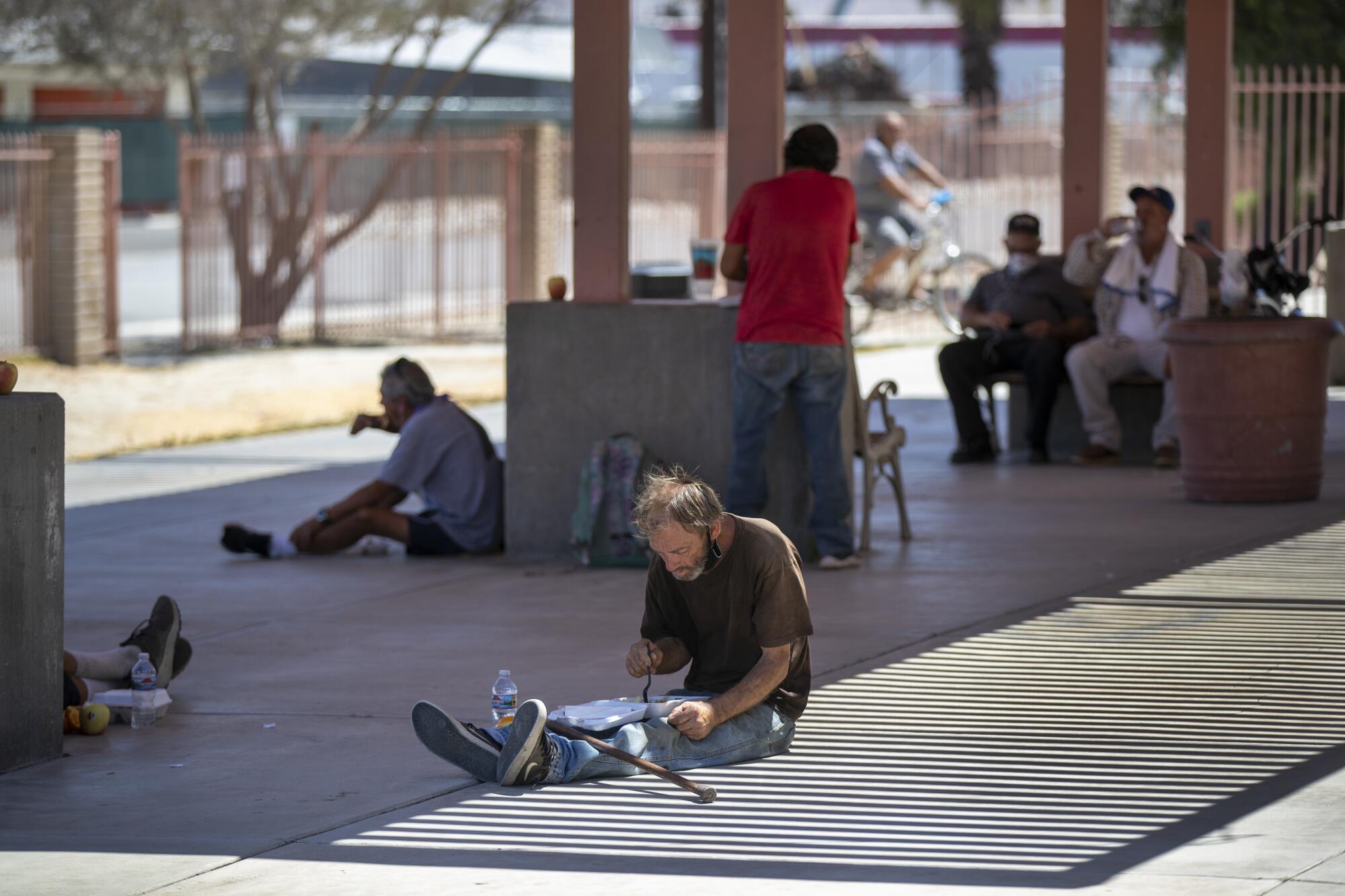
San Bernardino County’s expansive desert region also bears the burden of fighting heat and COVID-19. The city of San Bernardino has not opened any cooling centers this year out of concerns over the coronavirus, community recreation manager Mitch Assumma said.
While much is still not known about the coronavirus, it has become clear that it spreads more quickly indoors than outdoors.
That is one reason officials have closed indoor dining, bars, shopping malls and movie theaters in many areas as the virus has spiked across California. One study found that the coronavirus was spread at a restaurant in Guangzhou, China, by the air conditioning system.
But for many people with no other escape from the cruel inland heat, the risk of an indoor space with air conditioning feels like one worth taking.
Those shelters that do open must make calculations like never before — about how close they can position people, and even when guests can use bathroom facilities so as to avoid crowding.
In the desert near Victorville, only two emergency shelters are open, according to High Desert Homeless Services executive director Jimmy Waldron.
In Indio, Martha’s Village & Kitchen, a full-service homeless shelter, normally houses about 130 people and serves 1,000 meals a day. But due to COVID-19, the shelter has had to restrict the number of people in each room and now accommodates only 80 people. President and chief executive Linda Barrack said this year’s influx of needy people was more than the shelter was used to, which has led to a greater demand for supplies and social distancing protocols.
“We’re running at full capacity,” she said. “Every day we ask ourselves, ‘What are we able to get?’ At the moment we’re OK, but that doesn’t mean we’ll be OK in three days.”
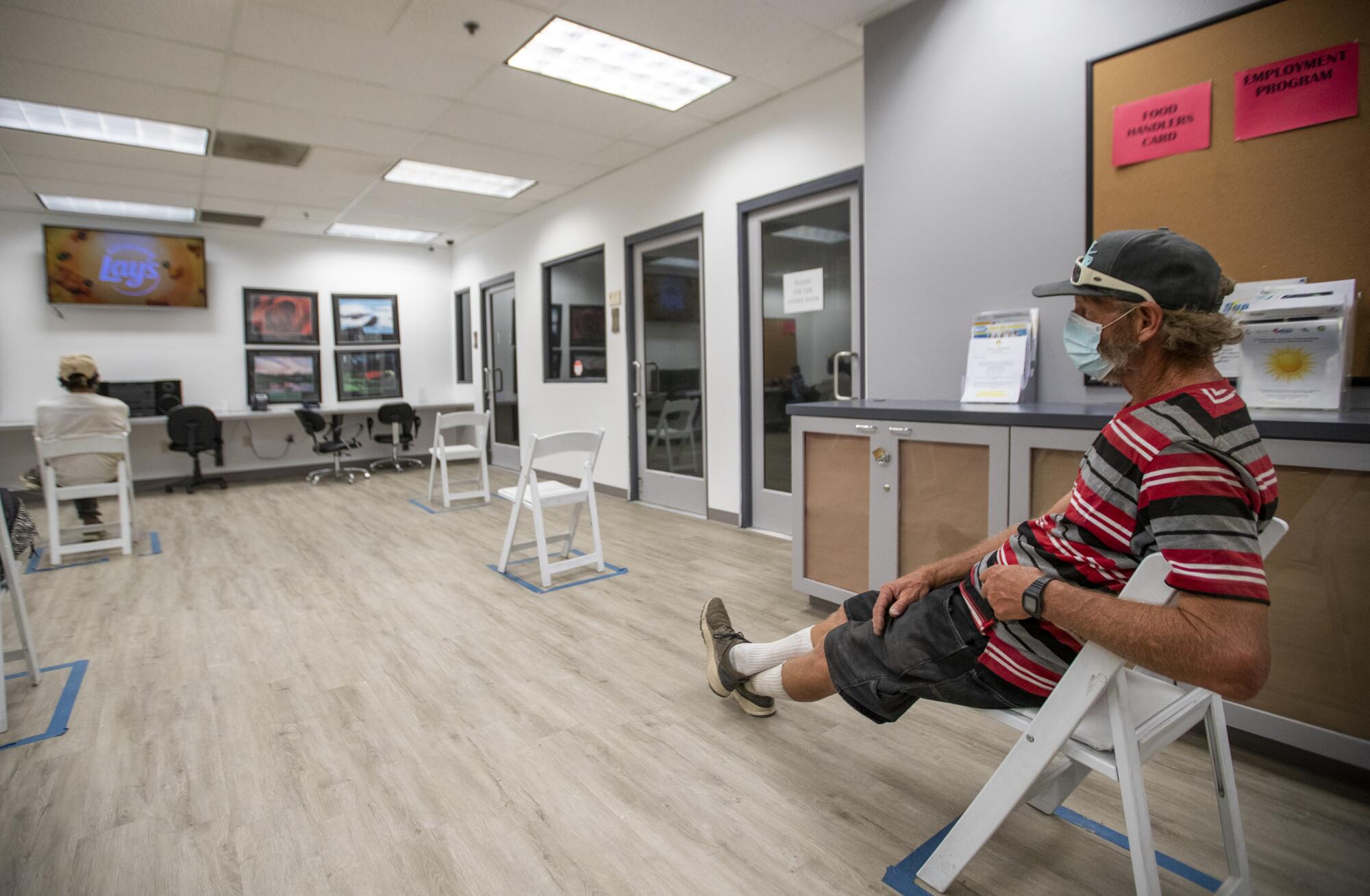
On a recent day, Gregory Newland, 63, waited in the shelter’s cooling center to escape the late-morning triple-digit heat. He makes the trek to Martha’s Village from his tent in the Coachella Valley once a week.
He sat in a chair marked off by tape to be six feet away from others. Newland has been living on the streets for five years, he said.
“Living out here is miserable this time of year,” he said. “I walk five to 10 miles to get here. I pick up recyclables along the way and stop by for lunch and a shower.”
He is one of the 100 homeless, low-income and senior guests who stop by Martha’s Village on any given day for cold water, snacks and access to air conditioning. Now that the cooling center has moved chairs six feet apart, it cannot hold as many people. Previously, computers were available for use, but now the monitors are sectioned off by caution tape, and visitors have to ask an employee for access.
The shelter has faced difficulties with staffing amid the pandemic as the need for workers has risen and the number of volunteers has dwindled. With a run on sanitary supplies after the outbreak, prices went up, which created an additional financial strain for the shelter, Barrack said.
Martha’s Village continues to accept people and has reconfigured its facilities to allow for additional cots if needed. Residents remain isolated in their rooms for most of the day and schedule times to use the amenities.
With so many layoffs and the job market down, people are staying longer at the shelter, Barrack said.
Sam and Jade Campbell, both 43 and originally from Las Vegas, became homeless right as the coronavirus began its global spread.
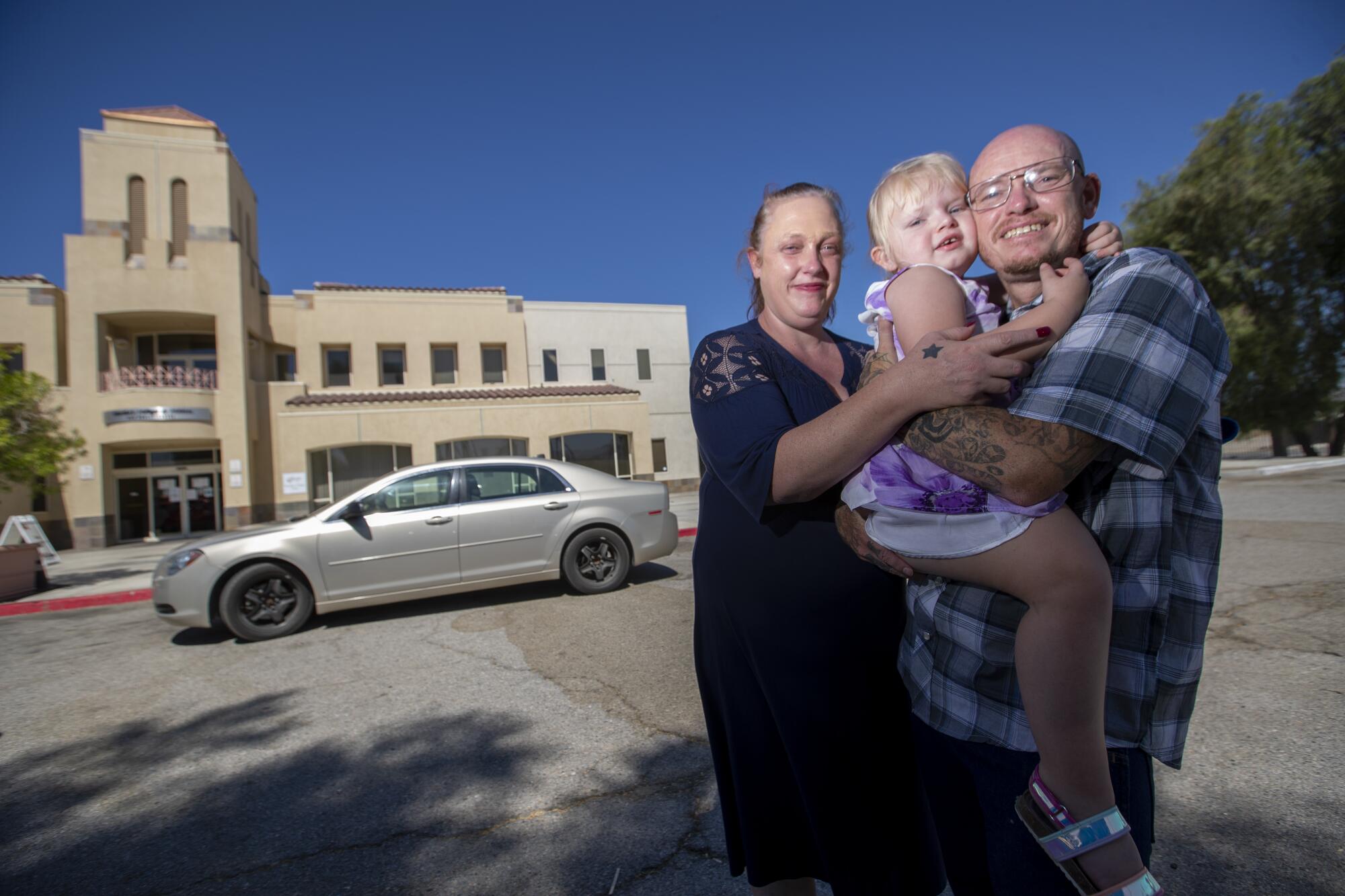
Before moving into Martha’s Village in April, the married couple and their 4-year-old daughter, Elizabeth, lived in another shelter and hotel. “We didn’t have a home to stay in; we didn’t have anything,” Sam Campbell said. “No car, money, no food.”
To keep his family safe from the coronavirus, Campbell ran every errand alone. On hot days, he said, cooling centers were a beacon of hope but also a cause for fear.
Trying to fight off both heat stroke and COVID-19 was more difficult than he anticipated. At the previous shelter his family stayed at, all guests slept in large, open rooms.
“There were so many people, and I was always worried about one of the guys bringing in the virus and spreading it to me or my wife or daughter,” he said. “My main concern was always my daughter.”
More to Read
Sign up for Essential California
The most important California stories and recommendations in your inbox every morning.
You may occasionally receive promotional content from the Los Angeles Times.
